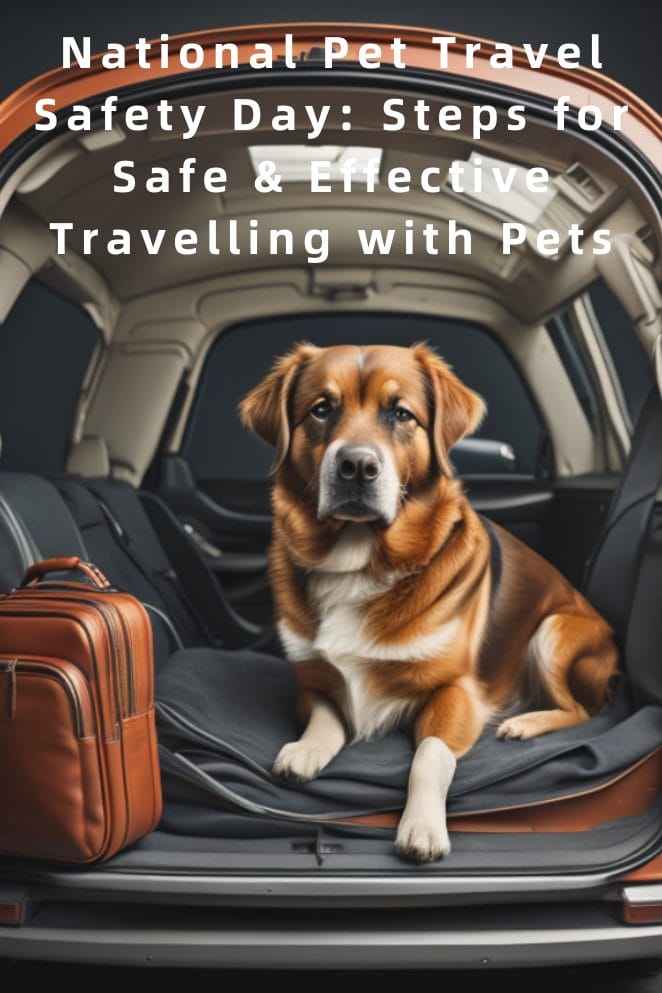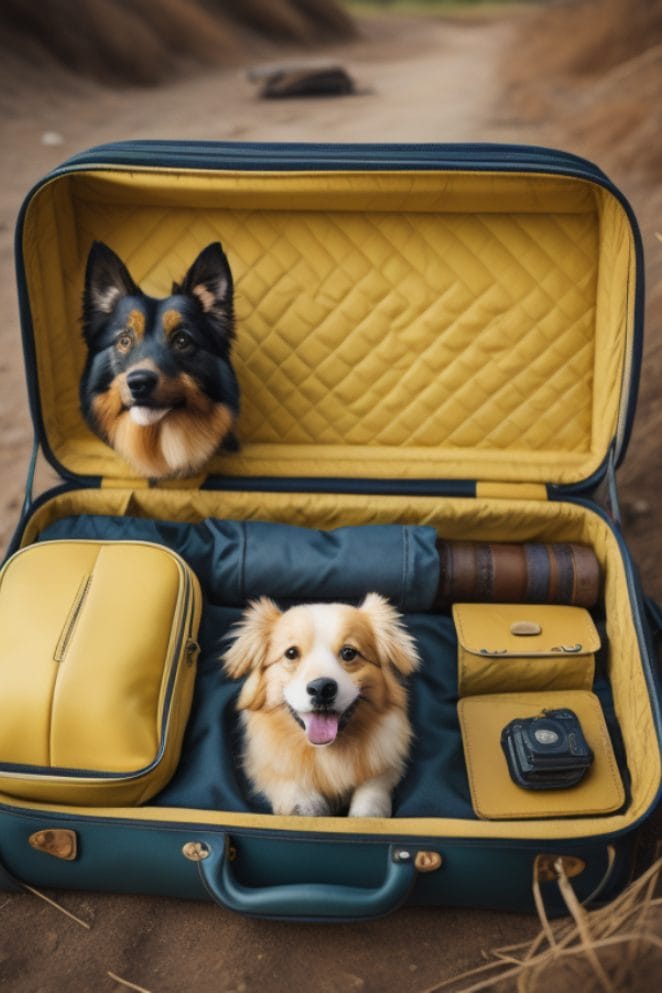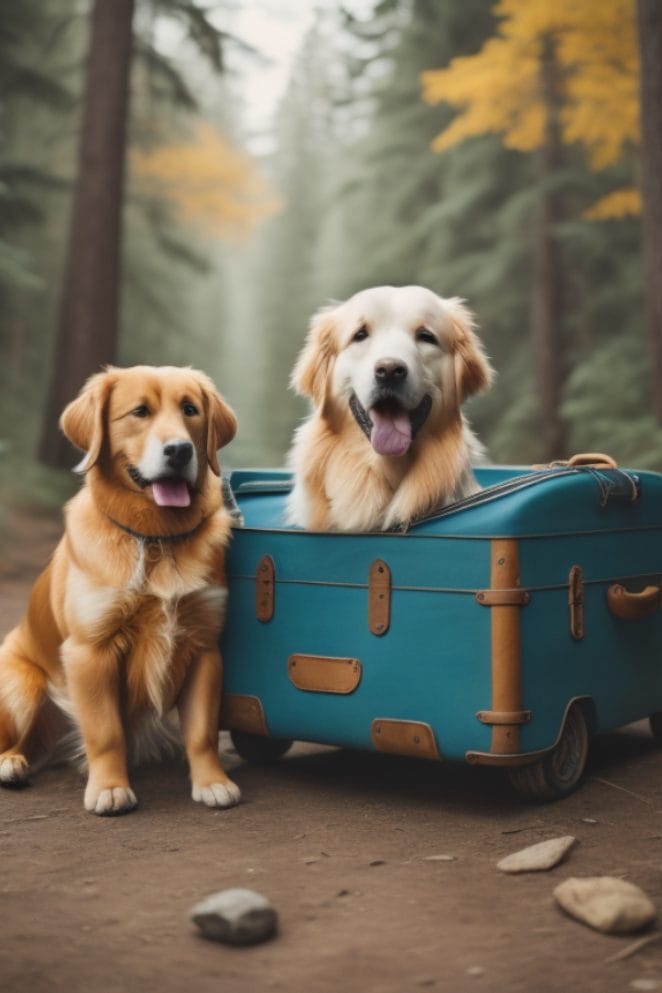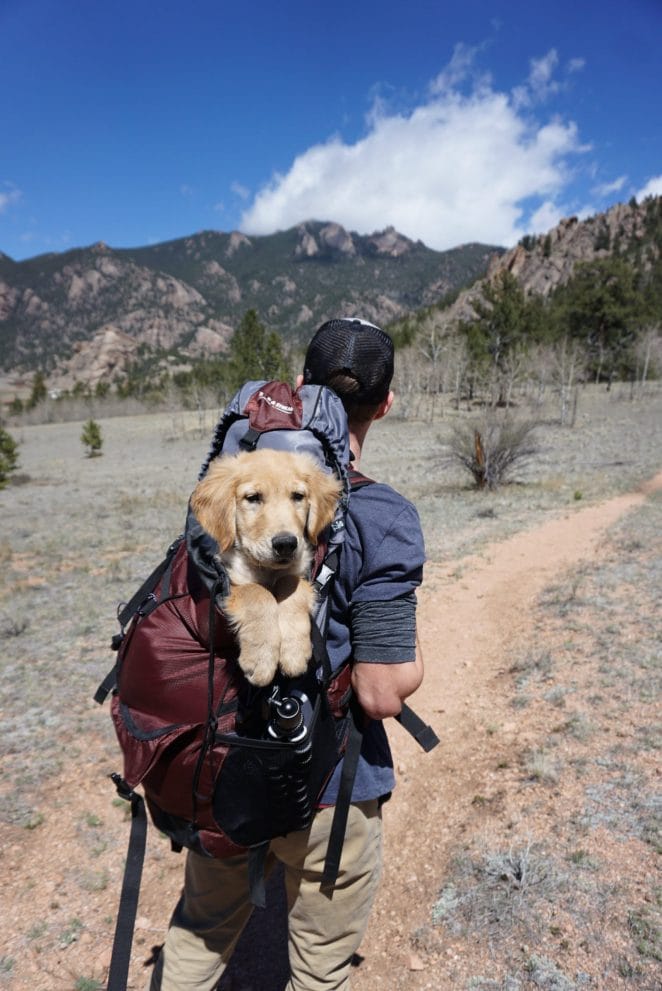
Every Year on January 2nd, we recognize National Pet Travel Safety Day, a dedicated occasion aimed at promoting awareness and prioritizing safety during pet travel.
The holiday encourages individuals to consider the well-being of their pets while on the move. Shockingly, statistics reveal that over 1.2 million dogs lose their lives on U.S. roads each year, with this number consistently rising.
Notably, among these incidents, 100,000 dogs meet tragic fates simply by riding in the beds of pickup trucks. Let’s use this day to foster a safer and more responsible approach to traveling with our beloved pets.
These heart-breaking losses of our cherished companions underscore the significance of observing this holiday. It’s an occasion that more pet owners should embrace. Let’s collectively reassess how we travel with our pets, aiming for safer practices to protect our loyal friends and ensure their mental well-being.
The History of National Pet Travel Safety Day

Colleen Paige established this holiday in an effort to raise awareness of pet travel safety among pet owners. In case you were unaware, Colleen Paige is a writer, lifestyle consultant, environmentalist, supporter of animal welfare, and the creator of numerous holidays with animal themes. In addition to perhaps a dozen other national holidays, she founded National Puppy Day, National Dog Day, National Wildlife Day, and National Pet Day.
5 Must-Know Tips for Safe Travel with Your Pet

Use a secure carrier
While it may appear that “the bigger, the better” when it comes to pet carriers, having many feet may not be the ideal option. Pet carriers should have *just* enough room so that your pet can move around without difficulty. Your dog or cat may get flung around in a carrier that is too large when the car is moving.
If you’re flying, you’ll need to choose your airline really carefully. Soft-sided carriers are needed for airplanes because they are more pliable and simpler to store. Additionally, the carrier needs to fit beneath the seat in front of you. To find out the precise maximum size of pet carriers that are permitted on your journey, visit the website of your airline.
Make plans for food and water
Making sure your pet’s needs are being addressed is one method to help them feel more at ease during the travel. As far as possible, adhere to their regular feeding schedule (though it’s normal for a stressed-out cat to decline).
Make sure dog food is easily accessible and not hidden beneath three luggage in the trunk by packing extra than you anticipate needing. Use a small container with a lid if you plan to use water. In this manner, you can quickly remove water for your dog or cat as needed and store it without having to discard any leftover or deal with spillage.
Make frequent stops every two to three hours
Seek out pet-friendly rest sites (sadly, not all of them allow pets). Bring your pets (on a leash, of course) to approved pet areas so they can exercise and relieve themselves. If your cat is willing to use the litter box, now is an excellent time to put it out. Again, it’s not unusual for a cat under stress to turn down this offer, but whenever possible, provide the option.
During the summer, take particular care while scheduling meal breaks. Plan your activities for your pet while you eat if you’re only stopping for lunch. Cars can get dangerously hot—they can rise 20 degrees in only ten minutes—when the outside temperature is in the seventies or higher. This can be deadly for animals who are confined inside.
Your pet needs to be on a leash and worn in a harness with an ID tag.
Although you want your dog to burn off some energy, letting your dog run loose in a field at a rest break in another state is not the best choice. Imagine dedicating an entire day of your vacation to finding Fido and conducting rescue operations.
Your two objectives are to keep your pet from getting lost and to locate them as soon as possible.
Know and accommodate your pet’s health status.
See your veterinarian to get permission to travel before making any lengthy travels. They could be able to identify unidentified health problems that would make travel too risky.
Don’t take the chance if your pet’s health isn’t the best. Arrange for your cherished companion to stay at home with a competent friend, relative, neighbour, or dependable pet sitter.
If not, make sure your pet is up to date on heartworm, flea, and tick treatments and carry their medications. Just in case, be aware of the veterinarian’s contact details at your destination.
Essential Dog Travel Accessories for Pet Owners

Pet Restraints
A mechanism for securing your pet while driving is the most crucial component of any pet-friendly road trip. A crate or a protected carrier are your options. Alternatively, use one of our crash-tested seat belt harnesses. In either case, the first goal is always making sure everyone returns home safely.
Water
Water is the second most crucial item to bring for both you and your pet. We always keep a couple of BPA-free, refillable water bottles in the van.
It might be hazardous to not have enough water if you are delayed for any reason, especially on a hot day. Therefore, remember to fill the bottles each time you depart.
First Aid Kit
Mishaps occur, and having a fully stocked first aid kit on hand will be helpful if you or your dog sustains a minor wound.
Not every first aid kit is made equally! Make sure it has everything you’ll need to assist your pet, including dog cones.
Waste Bags
Dogs have a way of knowing when we’re not carrying trash bags, and that’s when they decide it’s time to relieve themselves! It’s important to keep a sufficient number of waste bags on hand so that you’re never left holding the bag.
Food and Treats
If you skip a meal, your pet will be quite unhappy! Because it takes up less room and keeps your pet hydrated when combined with water, dehydrated pet food is particularly practical.
Medication
It is a good idea to always carry a dose or two of any medication your pet may need. Then, you can still give your pet his medication on time even if you’re running late. Keeping organized is made easy with a pill carrier.
Toiletries
It’s similar like traveling with a newborn infant when you travel with a pet. They both need love, attention, and most of all, a satchel full of essentials. You agree that it sounds ridiculous? However, that is the truth. Essentials include toiletries and bathroom necessities like tongs, bags, towels for the bathroom, and dog shampoos. If you have a puppy, animal diapers are an excellent choice. Additionally, carry a dog ramp if you want.
Pet Cage
Any animal that relocates may find it extremely stressful, which could lead to anxiety and other health issues. It’s vital to give them time to take it all in and adjust at their own pace. You may buy a travel-friendly cage that also functions as a mini house for your pet, depending on how big they are. This way, they can relax and take their time getting used to a new environment.
Final Thoughts
Now that you know what essentials to bring while traveling with a pet, you can go on adventures and create memories with your companion.
Nothing should ever stop you and your pet from enjoying pleasant times together; just be cautious and knowledgeable on how to care for and soothe your dog when traveling. If you pack these essentials, your pet will enjoy themselves immensely and won’t have to worry about anything unexpected; in the unlikely event that something bad does happen, at least you’ll be prepared.


GIPHY App Key not set. Please check settings